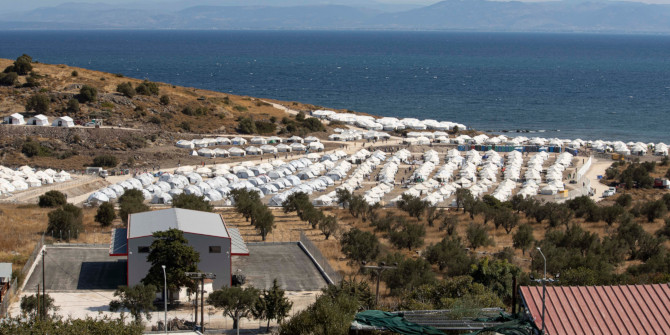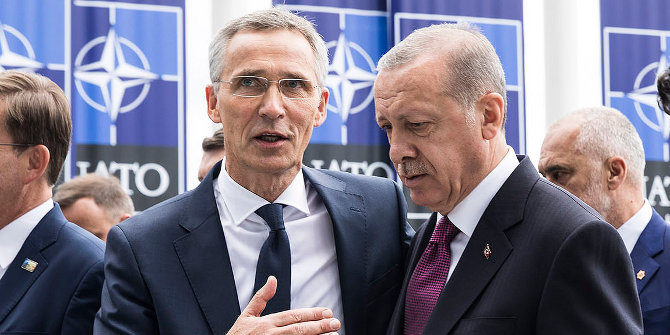Recent attempts to reform EU asylum policy have been characterised by sharp divisions between Southern European countries and states in Central and Eastern Europe over mandatory refugee quotas. Yet as Natascha Zaun explains, this stands in stark contrast to EU asylum debates prior to the 2015 asylum crisis, when both Central Eastern and Southern Member States largely remained silent. She argues the 2015 crisis made clear the redistributive implications of EU asylum policies and motivated these states to adopt stronger positions at the European level.
Central Eastern European (CEE) and Southern EU Member States have traditionally been silent in negotiations on the harmonisation of asylum policies at the EU level as well as the Dublin Regulations which determine the Member State in charge of processing asylum claims. This has changed dramatically since the European asylum crisis of 2015. Ever since, asylum policies have become a bone of contention at the EU level.
The third reform of the Common European Asylum System (CEAS) was therefore deadlocked by the end of the 8th legislature of the European Parliament in 2018. Its successor, the New Pact on Migration and Asylum presented recently by the Commission remains highly contentious. But why have CEE and Southern Member States only become active post-2015 and why are asylum policies so contested?
In a new study, I argue that the 2015 asylum crisis presented a punctuated equilibrium for EU asylum policymaking. On the one hand, it entailed ‘information updating on previously ignored facts’ and demonstrated to these Member States that EU asylum policies can have severe redistributive implications. Moreover, the previous rise of right-wing populist parties in some of these countries (the Visegrád states and Italy) which was furthered by the asylum crisis itself, entailed ‘information updating on electoral preferences’ and encouraged their governments to adopt strong positions at the EU level.
The redistributive implications of EU asylum policies
EU asylum policies have followed a regulatory rather than a redistributive approach. They regulate which Member State is in charge of processing an asylum application through the Dublin Regulation rather than establish refugee quota schemes. They harmonise asylum policies through Directives on Status, Asylum Procedures and Reception Conditions for asylum-seekers rather than relying on a central EU Agency processing asylum claims thus creating the same conditions for all asylum applicants in Europe.
Still, both dimensions of EU asylum policymaking have clear distributive implications. For the Dublin Regulation these are immediately obvious: According to the Dublin system first countries of entry are generally to deal with asylum applications. These are usually border countries. Hence, Dublin redistributes asylum-seekers from traditional refugee recipient countries in the North-West of Europe to the South East of Europe. Policy harmonisation has a similar goal: Countries with a long-standing tradition of receiving asylum-seekers such as Germany or Sweden believe that they receive more asylum-seekers than the CEE or Southern Member States because of their higher protection standards. The declared aim of policy harmonisation in the EU therefore is to end secondary movements.
Traditionally low levels of contestation
While the redistributive implications could be expected to lead to confrontational negotiations in the Council of the EU, this was not always the case. The first (2000-2005) and second (2008-2013) phases of the CEAS were characterised by high levels of activity by the traditional asylum-seeker recipients and general passivity on the part of the Southern and later the CEE Member States that joined the negotiation table only in the second phase.

Kara Tepe refugee camp on the island of Lesbos, Credit: Nicolas Economou / Shutterstock.com
The passivity of these states can be explained by the concept of bounded rationality: In the first phase, Southern Member States underestimated the redistributive effect of EU asylum policies, particularly those of Dublin. These countries had little experience of refugee reception and did not expect to become refugee destinations. After all, Dublin could only be enforced if border states cooperated.
Border countries were still able to ‘wave asylum-seekers through’, as Greece did at a larger scale in 2015. This changed, of course, with the unilateral border closures in 2015. In the second phase of the CEAS, CEE Member States had only marginal asylum-seeker inflows and saw their positions largely defended by Germany or Austria whose asylum systems they had largely replicated in preparation for accession.
Deadlock in the 2016-2018 reform of the Common European Asylum System
The 2015 asylum crisis has entailed ‘information updating on ignored facts’, demonstrating to previously silent Member States that Dublin, even if dysfunctional, has clear redistributive implications. Given the high levels of contestation around the asylum crisis among publics in some of these Member States, the crisis has also entailed ‘information updating on electoral preferences’ and sometimes even brought new, populist governments into power.
This explains the deadlock of the CEAS reform in summer 2018: Southern border countries wanted a clear commitment that the EU was going to help them with their increased asylum-seeker numbers through the adoption of mandatory refugee quotas to ensure their even distribution. The Visegrád states (V4) were heavily opposed, as this would most certainly mean higher asylum-seeker numbers for them.
The North-Western Member States were not completely against, because they believed that this could end secondary movements of asylum-seekers towards them, but they made their support for it conditional on the adoption of an EU Asylum Agency (EUAA). This agency could intervene in asylum procedures in countries with weak asylum systems (usually CEE and Southern Europe), thus allegedly further preventing secondary movements – something the CEE and Southern Member States were not particularly keen on.
Yet, again Southern Member States were ready to compromise in exchange for clear commitment on solidarity in Dublin IV. This suggests that a compromise between traditional asylum recipients and Southern border countries is not impossible. However, the populist governments in the V4 and Italy acted as blockers, as they benefited electorally from the non-adoption of the reform. While the V4 benefited from this situation also in distributive terms, Italian Interior Minister Matteo Salvini argued that the Dublin IV proposal would not go far enough, as it would not abolish the first country of entry principle.
Some observers suggest that this criticism was merely a tactic: The non-reform allowed Salvini to sustain a perceived crisis situation in Italy that his party was well placed to capitalise on. The deadlock on Dublin IV and the EUAA eventually even spilled over to the traditionally uncontested Directives on harmonisation, as both CEE and Southern Member States used their support for the Directives as leverage, insisting that all EU asylum policies should be adopted as a package.
In sum, EU asylum policies pursue a redistributive aim, despite in the past coming in the shape of regulatory instruments. The 2015 crisis has highlighted that this regulatory approach did not yield the expected results and that the CEAS suffers from a severe implementation deficit. The EUAA and the refugee quotas discussed under Dublin IV are now openly redistributive instruments addressing these shortcomings.
But in addition with Southern and CEE Member States now having a clearer picture of the potential implications of redistributive asylum policy and with the rise of anti-immigrant attitudes and populist governments in some of these countries, these actors have become much more careful regarding the policies they accept. The Migration and Asylum Pact does not overcome the redistributive conflict underlying the deadlock of the CEAS reform which diminishes its likelihood to succeed.
For more information, see the author’s accompanying paper at the Journal of European Public Policy
Note: This article gives the views of the author, not the position of EUROPP – European Politics and Policy or the London School of Economics. Featured image credit: Nicolas Economou / Shutterstock.com





